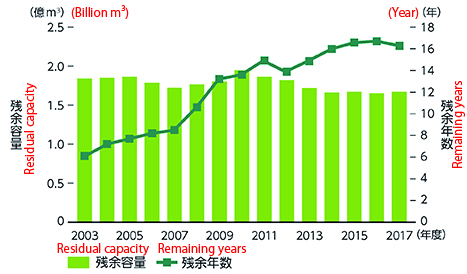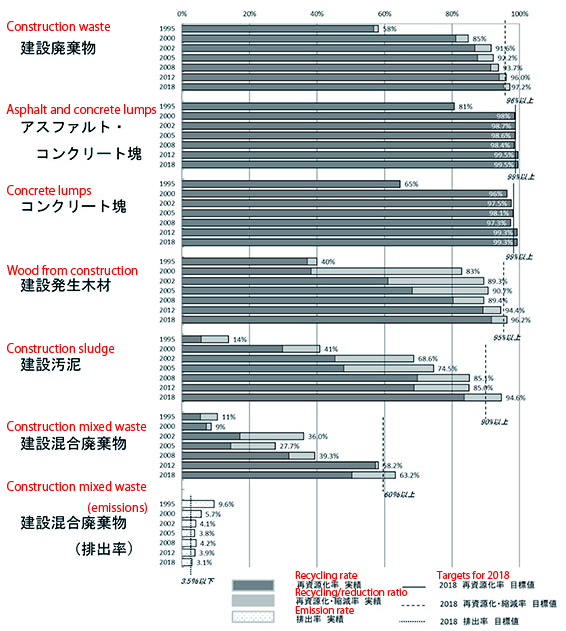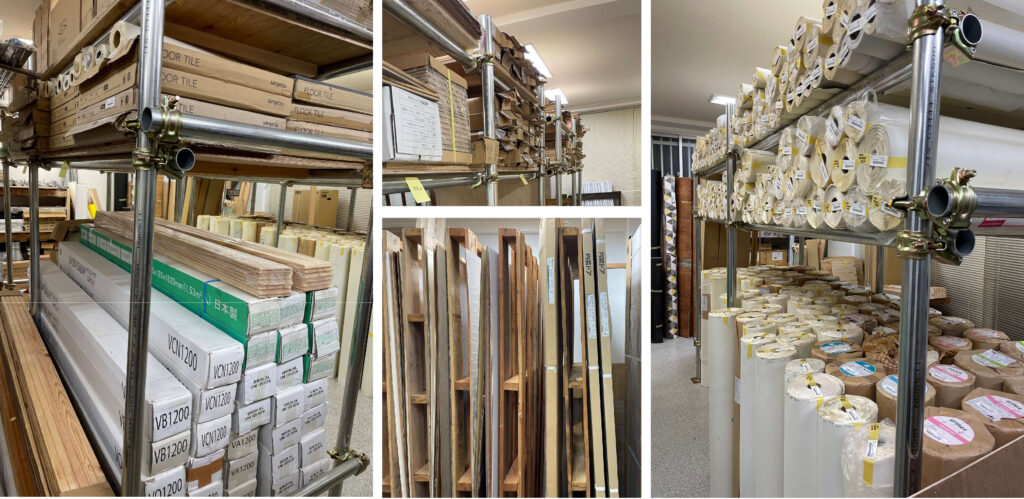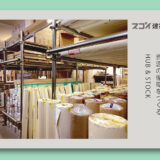The production of architecture is essentially a one-off affair.
As no two pieces of land or environments are precisely the same, every building is a one-of-a-kind product. Therefore, it is challenging to produce a building without a surplus of materials.
However, due to structural problems in the Japanese construction industry, more materials are thrown away than we think.
HUB & STOCK is a project to rescue and reuse materials produced more than what is needed and then thrown away without being used.
What is the building material loss problem?
Many of you will have heard of the problem of “food loss” in the food industry, and something similar is happening in the building industry.
Take a look at this picture.

Rescued surplus building materialsHUB & STOCK collected a truckload of surplus building materials from a single construction company.
As mentioned above, it is difficult to avoid surplus materials in conventional construction.
In Japan, it is common practice for construction companies to stock up on surplus materials that construction companies could use for other projects.
However, there are very few materials that can be reused, so each construction company has to stock such a large amount.
Even with this stock, only a tiny percentage can be reused, which is wasted.
The state of the building industry in Japan
Let’s look again at how the increase in waste is a problem.

Remaining capacity and remaining life of final disposal sites in Japan (industrial waste) Ministry of the Environment
Here are a document from the Ministry of the Environment estimating the remaining capacity of final disposal sites for industrial waste and how many more years they could last at this rate.
As the figure shows, in 2017, the remaining life of final disposal sites was 16.3 years.
We need to create a system that does not produce waste.
Secondly, in the previous picture, we can see many materials such as cloth, PVC tiles, and long sheets.
All of these materials are useful, but they also have their problems.
Difficult to reuse ‘mixed waste’
Waste materials such as cloth and PVC tiles are known as “mixed waste.”
The challenge with this mixed waste is that it is difficult to Recycle.
Mixed waste is, as the word “mixed” suggests, waste that is made of mixed materials.
Recycling must first be separated, but mixed waste is a ‘mixed’ building material.
Mixed waste is a pre-mixed building material, which is problematic from a recycling point of view.
This can be seen from the Ministry of Land, Infrastructure, Transport, and Tourism data.

Recycling rates by product (results of the 2008 “Construction By-Products” survey)
The chart above shows how much of each type of construction waste is reused in Japan. While the reuse rate for asphalt, concrete, and wood is over 90%, mixed waste is around 60%, a much lower figure than the others.
What HUB & STOCK can do for society

HUB & STOCK In-store stock
It is not that mixed waste cannot be recycled, but it isn’t easy.
This naturally makes it more expensive to recycle.
It is less costly to dispose of it than to recycle it. This increases industrial waste.
HUB & STOCK collects mixed waste that is difficult to recycle to reuse.
To think about recycling and reuse, we will now look at the circular economy, the economy of circulation.

Butterfly Diagram (CIRCULAR ECONOMY JAPAN)
The Butterfly Diagram has been produced as an illustration to help determine the priority approaches to the transition to a circular economy.
What you should see here is the right side of the diagram, the blue line.
From maintenance to recycling, there are four blue circles. The smaller these circles are, the more economical the circular economy is and the approach that should be prioritized.
Reuse, a smaller circle than recycling, is a more economical approach to the circular economy.
Priorities in the circular economy
Maintenance, Repair, Share > Reuse, Redistribution > Remanufacturing, Refurbishment > Recycle
ーHUB & STOCK Summaryー
▶More economical “reuse” in the circular economy
▶The main target is “mixed waste”, which is difficult to recycle.
▶Contractors can collect items that are difficult to dispose of or recycle, and can be purchased inexpensively when needed
HUB & STOCK is a win-win situation for the environment, the economy and the building industry, and may well bring a new culture of “resource recycling” to the Japanese building industry.
▽Learn more about HUB & STOCK! Click here to visit our website▽
▽Click here to visit Borderless Japan’s HUB & STOCK page▽
https://www.borderless-japan.com/company/about



